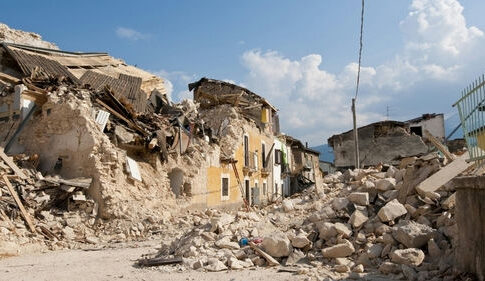Brace yourselves for a shockwave of epic proportions as one of the largest earthquakes in modern history has just rocked Russia, sending tsunami panic across the Pacific.
Unprecedented Seismic Event in Russia
On July 30, 2025, a catastrophic magnitude 8.8 earthquake struck near Russia’s Kamchatka Peninsula, creating a seismic event that echoed across the globe. This powerful quake originated approximately 84 miles east-southeast of Petropavlovsk-Kamchatsky, a region known for its volatile position on the Pacific “Ring of Fire.” The earthquake generated tsunami waves up to 15 feet high, triggering a cascade of alerts and evacuations spanning continents. The impact was felt far and wide, from the shores of Japan to the beaches of Hawaii, as nations scrambled to respond.
Governments across the Pacific, from Japan to the United States, were quick to issue tsunami warnings. Emergency systems jumped into action, proving the value of international coordination in managing such a far-reaching threat. Citizens were evacuated from coastal areas, and emergency services were on high alert, ready to handle potential casualties and damage. The scale of this disaster was reminiscent of the 2011 Tōhoku earthquake and tsunami, underlining the persistent dangers of living along these tectonic fault lines.
Impact and Response Across the Pacific
The earthquake struck July 29, 2025, at 11:24:50 PETT (23:24:50 UTC, July 30, 2025), sending shockwaves that quickly translated into a Pacific-wide tsunami. Russia’s Kamchatka and Severo-Kurilsk bore the brunt of the initial waves, with Japan’s Hokkaido region also experiencing notable impacts. In the U.S., the West Coast and Hawaii were put on high alert, with emergency measures and evacuations swiftly implemented. The response showcased both the vulnerabilities and the strengths of the Pacific nations’ disaster preparedness systems.
The tsunami waves caused moderate structural damage in various regions, with the most affected areas seeing destruction to buildings, including a kindergarten in Kamchatka. As the immediate danger passed, attention turned toward assessing the damage and planning recovery efforts. The swift action of international tsunami warning systems undoubtedly reduced potential casualties, although the full extent of the economic and social impact is still unfolding.
Historical Context and Preparedness
This seismic event is a stark reminder of the unpredictable might of nature, especially in a region as seismically active as the Kamchatka Peninsula. The area has a storied history of significant earthquakes, including the notorious 1952 Kamchatka earthquake, which also generated a Pacific-wide tsunami. In the lead-up to this event, multiple foreshocks had been reported, including a magnitude 7.4 quake just days before, indicating an escalating seismic threat.
Seismologists classify the 2025 earthquake as a rare megathrust event, similar in scale to the 2011 disaster in Japan. This classification highlights the underlying tectonic dynamics at play and underscores the importance of continued investment in seismic monitoring and public education. Preparedness measures, increased since past tragedies, have undoubtedly contributed to reducing casualties and managing the immediate aftermath more effectively.
Long-term Implications and Lessons Learned
While the immediate threat has subsided, the long-term implications of this earthquake will be felt for years to come. Rebuilding efforts in affected areas, particularly in Kamchatka, will take time and resources. The event has also reignited discussions on the necessity of robust infrastructure and early warning systems, not just in the Pacific but globally. The economic toll, from disrupted trade and damaged property, will challenge the affected regions’ economies, and the social impact of displaced communities will require thoughtful attention.
As we reflect on this seismic event, it’s crucial to recognize the resilience and cooperation demonstrated by nations across the Pacific. The lessons learned will inform future strategies and reinforce the importance of preparation and vigilance in the face of natural disasters. The ongoing response and recovery efforts will continue to be a testament to human determination and ingenuity in overcoming the formidable forces of nature.

